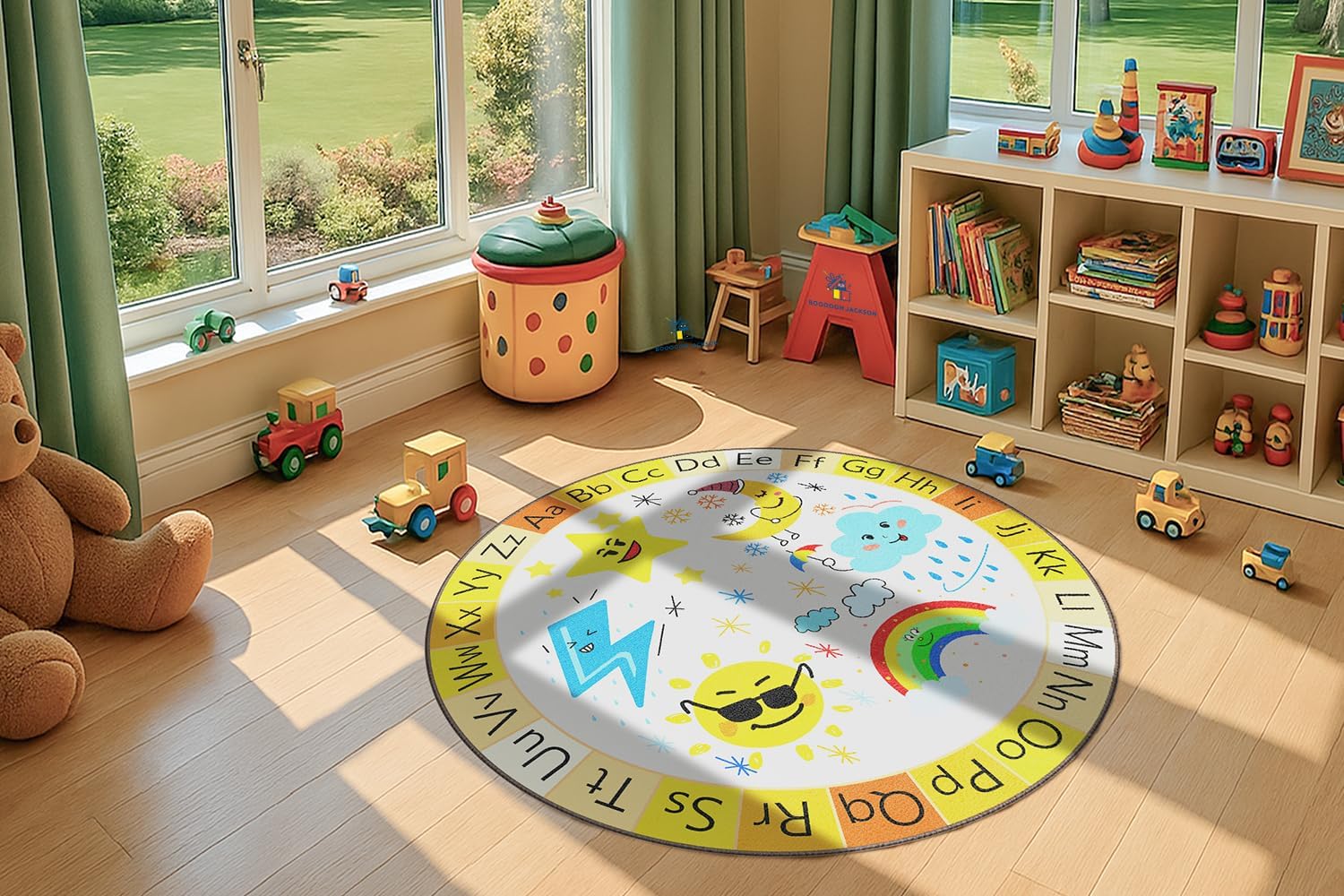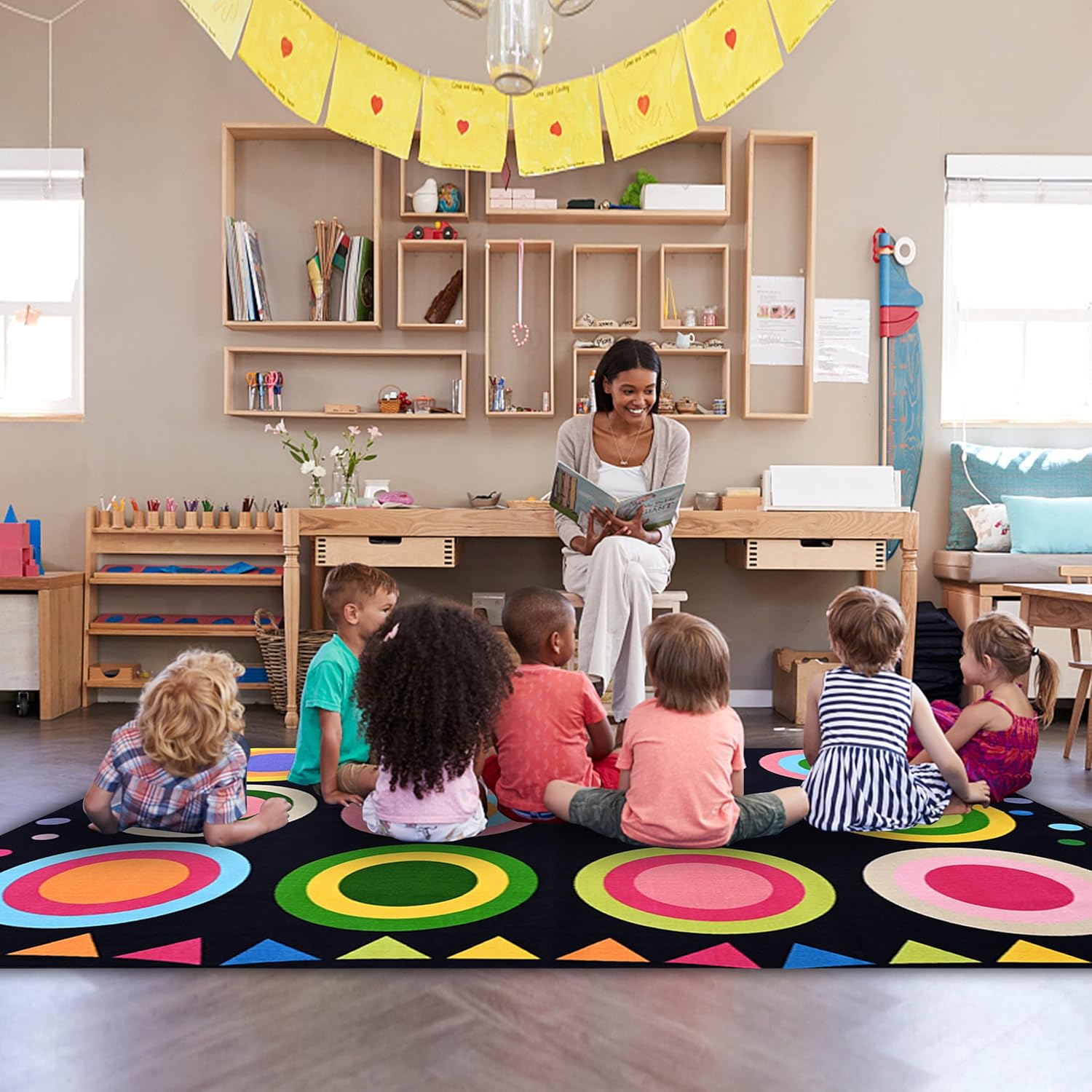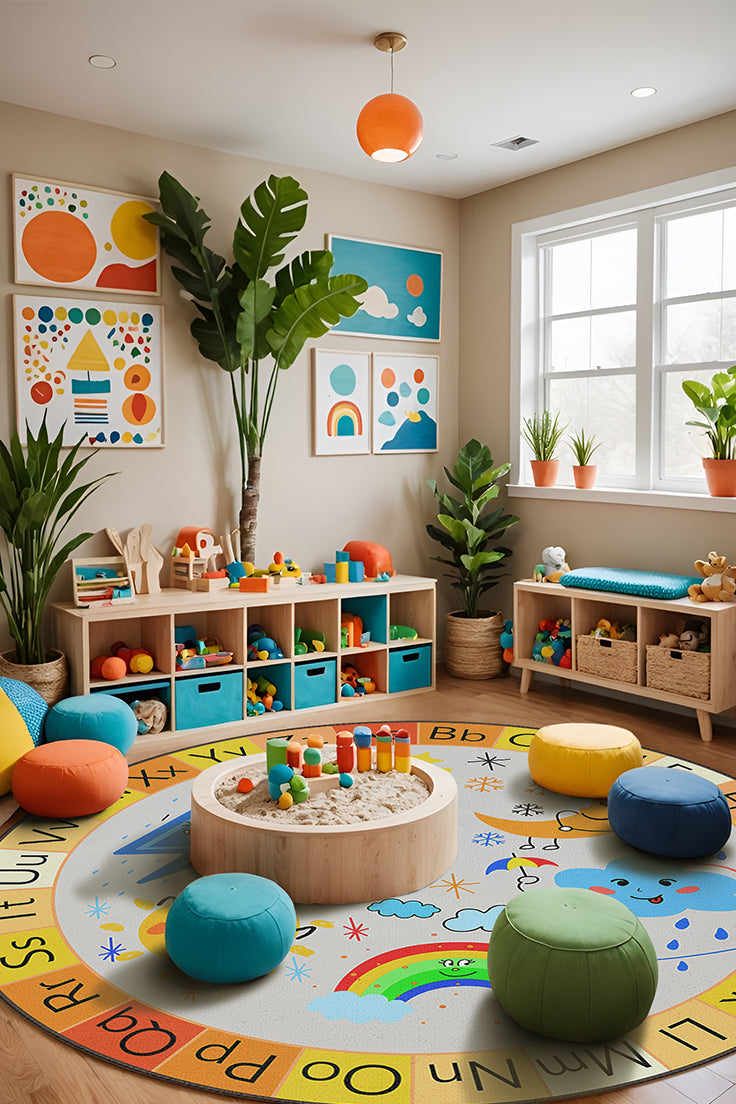The physical environment where learning takes place significantly impacts student engagement, focus, and overall academic outcomes. At Booooom Jackson, we understand that thoughtful classroom design goes far beyond aesthetics—it's about creating spaces that actively support cognitive function, emotional well-being, and diverse learning styles. This comprehensive guide explores four interconnected elements of modern classroom design: innovative layout trends, strategic lighting approaches, the integration of meditation music, and experiential learning opportunities.
Emerging Classroom Design Trends
The traditional classroom with rows of desks facing a teacher at the front is rapidly becoming obsolete. Today's innovative learning spaces reflect a deeper understanding of how physical environment impacts learning outcomes.
Flexible Zoning
According to Edutopia, today's most effective classrooms feature multiple zones designed for specific learning modalities:
- Collaboration stations with modular furniture that can be reconfigured for different group sizes
- Independent work areas with acoustic and visual privacy
- Technology hubs designed for digital learning
- Maker spaces equipped for hands-on creation and experimentation
- Reflection zones for quiet contemplation and mindfulness practices
Biophilic Design Elements
The Learning Spaces Magazine highlights the growing trend of incorporating natural elements into classroom design:
- Living walls and indoor plants that improve air quality and cognitive function
- Natural materials like wood and stone that create calming sensory experiences
- Views of nature through strategic window placement
- Nature-inspired colors and patterns that reduce stress
- Natural light optimization through window treatments and room orientation
Personalization and Student Agency
Modern classroom design increasingly empowers students to customize their learning environments:
- Student-selected furniture arrangements within established zones
- Adaptable spaces that can be reconfigured throughout the day
- Personal storage solutions that travel with students between activities
- Choice boards that allow students to select preferred work environments based on the task
- Student input in classroom design decisions
Technology Integration
According to Education Week, effective modern classrooms seamlessly integrate technology without letting it dominate:
- Charging stations positioned strategically throughout the room
- Display areas for both digital and analog student work
- Flexible tech zones that can transition between digital and non-digital learning
- Thoughtful cable management to maintain organization and safety
- Both high-tech and low-tech learning options available simultaneously
The Science of Classroom Lighting
Lighting is one of the most influential yet often overlooked aspects of classroom design. Research consistently shows that appropriate lighting significantly impacts student attention, mood, and academic performance.
The Impact of Lighting on Student Performance
The Illuminating Engineering Society reports that proper classroom lighting can:
- Improve reading speed and accuracy by up to 35%
- Reduce hyperactivity in students with attentional challenges
- Support proper circadian rhythm functioning for improved alertness
- Reduce headaches and eye strain associated with poor lighting conditions
- Create appropriate emotional tone for different learning activities
Lighting Design Best Practices
Optimal classroom lighting incorporates several key elements:
- Layered lighting combining ambient, task, and accent lighting
- Adjustable brightness levels to accommodate different activities and times of day
- Color temperature variation with cooler, bluer light (5000K+) for focused work and warmer tones (2700-3000K) for creative or reflective activities
- Glare reduction on screens and work surfaces
- Natural light maximization with appropriate shading options
Innovative Lighting Approaches
Forward-thinking schools are implementing advanced lighting strategies:
- Circadian lighting systems that adjust color temperature throughout the day to support natural body rhythms
- Individual task lighting that students can control at their workstations
- Lighting zones that can be adjusted separately for different classroom areas
- Sensor-based systems that automatically adjust to natural light conditions
- Special needs considerations such as flicker-free options for students with sensory sensitivities
At Booooom Jackson, we've found that even small lighting adjustments can dramatically improve classroom functionality.
Using Meditation Music to Enhance Learning
The strategic use of sound—particularly meditation music—is gaining recognition as a powerful tool in educational settings. When implemented thoughtfully, it can transform classroom atmosphere and support multiple educational objectives.
Benefits of Meditation Music in Educational Settings
According to Mindful Schools, appropriate meditation music in the classroom can:
- Reduce student stress and anxiety levels
- Improve focus and attention span during independent work
- Create predictable auditory cues for transitions between activities
- Mask distracting environmental noises
- Support emotional regulation and impulse control
Effective Implementation Strategies
Consider these approaches for integrating meditation music into your classroom:
- Morning mindfulness sessions with calming instrumental music to start the day
- Transition soundtracks that signal movement between activities
- Focus music during independent work time (typically instrumental with 60-80 beats per minute)
- Energizing tracks for movement breaks or physical activities
- Cool-down melodies following high-energy activities to reset the classroom tone
Selecting Appropriate Audio Content
The Yale Center for Emotional Intelligence recommends these considerations when selecting classroom audio:
- Age appropriateness with simpler sounds for younger students
- Cultural inclusivity featuring instruments and musical traditions from diverse backgrounds
- Tempo matched to intended purpose (slower for calming, moderate for focus, rhythmic for movement)
- Volume control kept at a level that supports rather than dominates the learning environment
- Predictable patterns that don't contain surprising elements that might distract
Technology Solutions for Classroom Audio
Modern options for implementing meditation music include:
- Dedicated classroom sound systems with zone control
- Timer-based applications that automatically transition between activity soundtracks
- Curated playlists designed specifically for educational settings
- Sound masking systems that reduce distracting noise without adding noticeable music
- Individual headphone stations for personalized audio experiences
Visit Booooom Jackson for curated classroom audio playlists designed for different educational purposes.
Experiential Learning: Beyond the Traditional Classroom
Experiential learning—education that engages students through direct experience and reflection—represents a powerful approach that can be enhanced through thoughtful classroom design.
The Science Behind Experiential Learning
According to the Wikipedia article on Experiential Learning, this approach is grounded in the understanding that:
- Learning retention increases dramatically when students are actively involved
- Multiple sensory pathways strengthen neural connections and memory formation
- Real-world application creates stronger conceptual understanding
- Student autonomy and agency increase intrinsic motivation
- Reflection and analysis transform experiences into deeper learning
Designing Spaces for Experiential Learning
Effective experiential learning environments include:
- Flexible maker spaces with accessible tools and materials
- Indoor/outdoor connections that expand the learning environment
- Simulation areas for role-playing and scenario-based learning
- Documentation stations for recording observations and reflections
- Presentation spaces for sharing experiential outcomes with peers
Experiential Learning Across Disciplines
The Association for Experiential Education Blog highlights how different subject areas can leverage experiential approaches:
- Science: Investigation stations with hands-on materials and documentation tools
- Mathematics: Real-world application areas with manipulatives and measurement tools
- Language Arts: Performance spaces, recording studios, and publishing centers
- Social Studies: Simulation environments, cultural artifacts, and community connection zones
- Arts: Creation studios with appropriate materials, lighting, and display options
Assessment in Experiential Learning Environments
Traditional assessment methods often fall short in experiential settings. Consider:
- Documentation walls that show learning progression over time
- Digital portfolios that capture process and reflection
- Peer feedback stations that facilitate collaborative assessment
- Self-evaluation tools that promote metacognition
- Authentic audience connections that provide real-world feedback
Bringing It All Together: The Integrated Classroom
The most effective learning environments don't treat design, lighting, sound, and experiential learning as separate considerations but rather as an integrated ecosystem where each element supports the others.
Design Principles for Integration
- Coherent zoning where lighting, sound, and design elements work together for each area's purpose
- Sensory consideration balancing stimulation and calm throughout the space
- Transitional elements that help students navigate between different types of learning experiences
- Inclusivity focus ensuring all design elements work for diverse learner needs
- Flexibility priority allowing reconfiguration as learning needs evolve
The Role of Teachers in Designed Environments
According to Education Dive, even the best-designed classroom requires skilled facilitation:
- Teacher professional development on leveraging designed environments
- Ongoing assessment of how space is supporting learning goals
- Student training in using the environment effectively
- Community involvement in maintaining and evolving the space
- Documentation of successes and challenges to inform future design
Implementation Strategies
Transforming classroom environments doesn't have to happen all at once. Consider these approaches for practical implementation:
Starting Small
- Begin with a single zone transformation (like a reading corner with appropriate lighting and sound)
- Experiment with lighting changes using temporary solutions before permanent installation
- Create a classroom audio station with curated playlists for different activities
- Develop one signature experiential learning station that can be expanded over time
- Involve students in designing a specific area of the classroom
Budgetary Considerations
The Cult of Pedagogy blog suggests:
- Prioritizing changes that impact the most students for the most time
- Seeking grants specifically for innovative classroom environments
- Partnering with local businesses for materials and expertise
- Implementing changes in phases over multiple budget cycles
- Focusing on portable elements that can move with teachers if classroom assignments change
Measuring Impact
To assess the effectiveness of environmental changes:
- Collect baseline data on student engagement before making changes
- Survey students about their experiences in the transformed environment
- Document changes in academic outcomes following implementation
- Track behavioral indicators like time on task and transition efficiency
- Gather feedback from other stakeholders including parents and administrators
Conclusion
Creating optimal learning environments through thoughtful design, lighting, sound, and experiential opportunities represents an investment in student success that extends far beyond aesthetics. By approaching classroom design as a holistic endeavor that supports cognitive function, emotional well-being, and diverse learning approaches, educators can transform ordinary spaces into extraordinary environments for growth and discovery.








Leave a comment
This site is protected by hCaptcha and the hCaptcha Privacy Policy and Terms of Service apply.